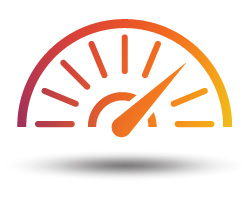
Heat may be natural in the summer, but it isn't always harmless. High temperatures increase the risk of heat illness, especially for young children, older adults, and people who are overweight, ill, or working or exercising outside.
You can protect yourself by taking some simple precautions and by knowing the signs of heat illness. If you or someone else has symptoms, acting right away can prevent a medical emergency.
A healthy respect for the heat
High temperatures should affect what you wear and what you do. To reduce your risk of heat illness:
- Use air conditioning or cool showers or baths to keep yourself cool. If you don't have air conditioning, spend a few hours a day in an air-conditioned shopping mall or public library, or call your public health department to find out if there's a heat-relief shelter in your area.
- Wear lightweight, light-colored and loose-fitting clothing.
- Drink plenty of fluids. When you're well-hydrated, your urine should be very light or clear. This is especially important when you're active. Learn more about exercising during hot weather here.
- Avoid caffeine and alcohol, which can dehydrate you.
- Schedule outdoor activities during the coolest parts of the day, usually mornings and evenings.
- When you're outside, wear a hat or visor, sunglasses, and sunscreen.
Signs you're overheating
Heat illness is a sign that your body temperature is getting dangerously high. If you ignore the symptoms, your temperature can keep rising. Your body can get hot enough to cause brain damage or death.
The three types of heat illness, in order of increasing severity, are heat cramps, heat exhaustion and heatstroke.
Heat cramps are often the first sign that your body can't handle the heat. These muscle cramps usually affect the legs, arms or abdomen.
If you have heat cramps, stop all activity and rest in a cool area. Drink water or a sports drink.
If you have heart problems or are on a low-sodium diet, you should seek medical attention for heat cramps, according to the Centers for Disease Control and Prevention (CDC). You should also see a doctor if heat cramps don't go away within an hour.
Heat exhaustion can come on gradually (possibly over several days). According to CDC, symptoms may include skin that is cool, moist and pale; dizziness; nausea; fainting; headache; and muscle cramps. People with heat exhaustion may also develop a rapid, weak pulse.
Again, resting in a cool area and drinking fluids can help your body cool down. Consider a cool shower, bath or sponge bath, and seek out an air-conditioned environment.
Heatstroke is a medical emergency. The body's systems for cooling itself shut down, and body temperature can rise to 106 degrees or higher within 10 to 15 minutes.
Symptoms can include:
- Red, hot, dry skin.
- Rapid, strong pulse.
- Throbbing headache.
- Dizziness.
- Nausea.
- Confusion.
- Unconsciousness.
Heatstroke can be deadly. If you see someone who has these symptoms, send someone to call 911 while you try to cool the person down. Move the person to a shady or cool area and use whatever means you have for cooling them, such as a bath, shower, garden hose or sponge bath. If you're in a dry climate, wrap the person with a cool, wet sheet and fan him or her vigorously.
Be a buddy
Because people don't always recognize their own symptoms of heat illness, it's a good idea to use a buddy system on hot days. If you have an elderly or ill neighbor, for instance, check in on him or her at least twice a day during heat waves. If you work or exercise in the heat, assign yourself a buddy. If one of you gets overheated, the other can help.
Reviewed 3/12/2025